This story contains SPOILERS for Mission: Impossible — Fallout.
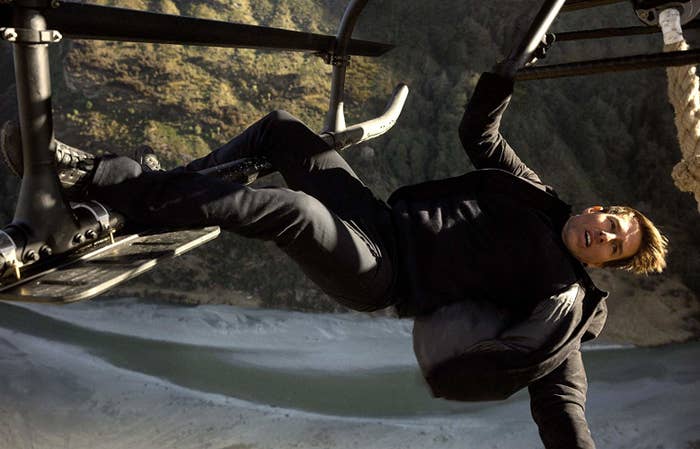
In Mission: Impossible — Fallout, Tom Cruise jumps out of a plane at 25,000 feet, for real. He speeds through the streets of Paris on a motorcycle without a helmet, for real. He leaps across the rooftops of buildings in central London, for real. And he dangles off of the bottom of a flying helicopter before boarding that helicopter and putting it into a tight spiral turn in the middle of a steep gorge, for real.
At some point while watching Tom Cruise do these things in this movie, you might find yourself thinking, Is there any stunt in a movie that Tom Cruise can't do?
According to Fallout's writer-director Christopher McQuarrie, "The short answer is no."
McQuarrie has worked with Cruise in some capacity on nine films, including directing the star in Fallout, 2015's Mission: Impossible — Rogue Nation, and 2012's Jack Reacher, as well as doing an uncredited rewrite of 2011's Mission: Impossible — Ghost Protocol. In that time, McQuarrie has come to regard Cruise as "the hardest working, the most dedicated, the most experienced, and the most professional" star in Hollywood, especially when it comes to participating in physical, practical stunts.
Those stunts, McQuarrie said, are the franchise's "brand."
Directing Cruise in a Mission: Impossible movie also means having to watch one of the most famous movie stars in the world actively and repeatedly risk his life just to get a great shot. "This is what differentiates Mission: Impossible from Bond and Bourne," McQuarrie said. "It's a little bit of a double-edged sword and maybe a little bit of a pair of golden handcuffs."
And there is arguably no one else in the world other than Cruise who would be able to pull it all off. "I would imagine that if an actor of lesser stature than Tom said, 'I want to do this,' it would probably be a lot easier for the studio to say no," said McQuarrie. "This is his job, and he does this job 24/7. Tom is a moviemaking machine. … It's very difficult to argue with his record."
As McQuarrie explained, making a Mission: Impossible movie with Cruise presents a unique set of benefits — and challenges.
Cruise won't do anything he can't do safely — but his threshold for safety is extraordinarily high.
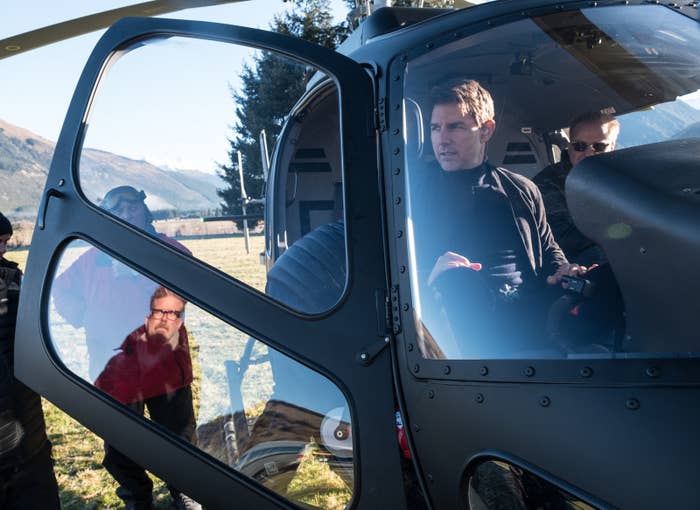
As has been the case for practically the entire Mission: Impossible franchise, the writing process for Fallout was driven by the stunts themselves, with McQuarrie and Cruise sitting down and deciding what they most wanted to see Cruise's alter ego Ethan Hunt do onscreen, and then building a story around that. Despite all appearances, McQuarrie insists that Cruise's decision making about what stunts to attempt is governed first and foremost by safety. "I also know that Tom is not going to do anything stupid," he said. "That doesn't mean things can't go wrong, but it also means Tom is not pushing himself beyond his abilities foolishly."
Still, while it's probably a little absurd to try to pinpoint which of Cruise's stunts in Fallout was the most life-threatening, filming Cruise fly a helicopter by himself through several highly unorthodox maneuvers, like a steep corkscrew dive, is at least among the more treacherous stunts ever attempted on film.
"The helicopter sequence was extremely daunting and extremely taxing mentally and physically," said McQuarrie. "But I also knew that if we were not feeling that [anxiety], we were probably not anywhere close to getting something that was worthwhile [for the film]. So I have to look at Tom and say, 'Can you do this?' And Tom will say, 'Yeah, absolutely.'"
It isn't quite that simple. Cruise trained intensely for months to learn how to pilot the Airbus helicopter well enough to navigate it through the stunts they wanted for the film, and he had to get the company's blessing before they would allow him to shoot the sequence. "Airbus did not want Tom Cruise dying in one of their helicopters," said McQuarrie. "That's not really good advertising. They took a lot of convincing. When I knew Airbus was comfortable with Tom flying that helicopter, that made me a lot more comfortable."
What matters most, however, is that we need to see Cruise doing it.

Despite all the concern about safety, it often isn’t the biggest factor behind the decision for Cruise to not perform a stunt. Instead, it’s whether performing that stunt will, you know, look good on screen.
The most common pitch McQuarrie said he fields for Mission: Impossible movies is putting Cruise in a "squirrel suit" — i.e., wingsuits used for BASE jumping down steep mountainsides. But he rejects it every time. "The only time those squirrel suits are compelling is when the camera is on the ground and the guy in the squirrel suit is going by at 100 miles, 200 miles an hour, or you're behind him flying through ravines and stuff like that," said McQuarrie. "So at no point can you ever actually identify the person doing it. … [If] you can't see his face, then why are we doing it?"
Similarly, on Fallout, McQuarrie ended up nixing a stunt during the sequence in which Hunt is chasing after the CIA agent played by Henry Cavill, and Cruise was supposed to jump through a glass window, bounce off the roof of a train, and tackle Cavill to the ground.
Cruise, McQuarrie said, was totally fine with executing the stunt. But the director didn’t think it offered much opportunity to capture the star’s face, and it would require a lot of painstaking, time-consuming technical planning to pull off. So they didn’t do it. "We can do it, but why bother?" said McQuarrie. "It was never about Tom going, 'I won't do it,' or me saying, 'It's too dangerous.' We just looked at it and we were like, 'It's kind of a drag.'"
In general, though, it's best to let Cruise do — or, at least, try to do — want he wants.
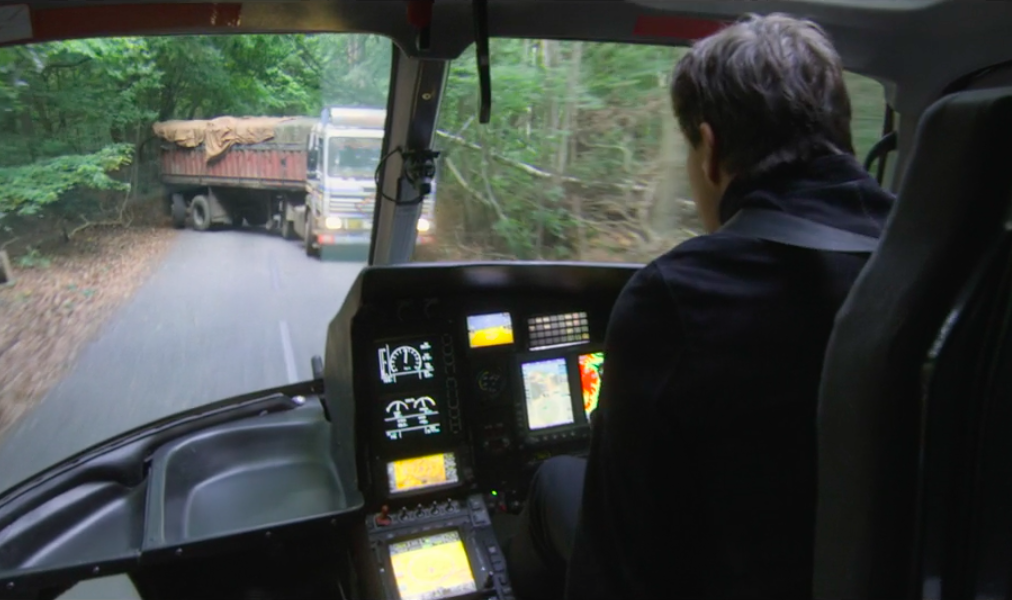
"You know, Tom, he's got lots of ideas," McQuarrie said with a chuckle. "I have learned to simply indulge every one whether I get it or not, because one of two things will happen: I will either come to understand the idea, or Tom will come to the conclusion that, 'You know what, this doesn't work,' and he'll just bail on it. He will not drive the point home just because it was his idea."
One example: The first trailer for Fallout ends with a hair-raising shot of Cruise inside the helicopter as it races headlong toward a truck barreling down a highway. But after a test screening, it ended up getting cut from the finished film.
"No one was citing that [shot] particularly, they were just citing that the helicopter chase felt long," McQuarrie said. It was ultimately a digression from the main thrust of the scene, but McQuarrie estimated that the entire beat with the truck took up only 20 seconds of screentime. Cruise, nonetheless, advocated cutting it.
"I found myself going, you know, 'Hey, man, look, we can change the music and we can re-edit it. We're not done with this,'" said McQuarrie. "And he's like, 'Look at the scores, man. Just take it out.'"
Cruise won't let a little thing like a broken ankle get in the way.
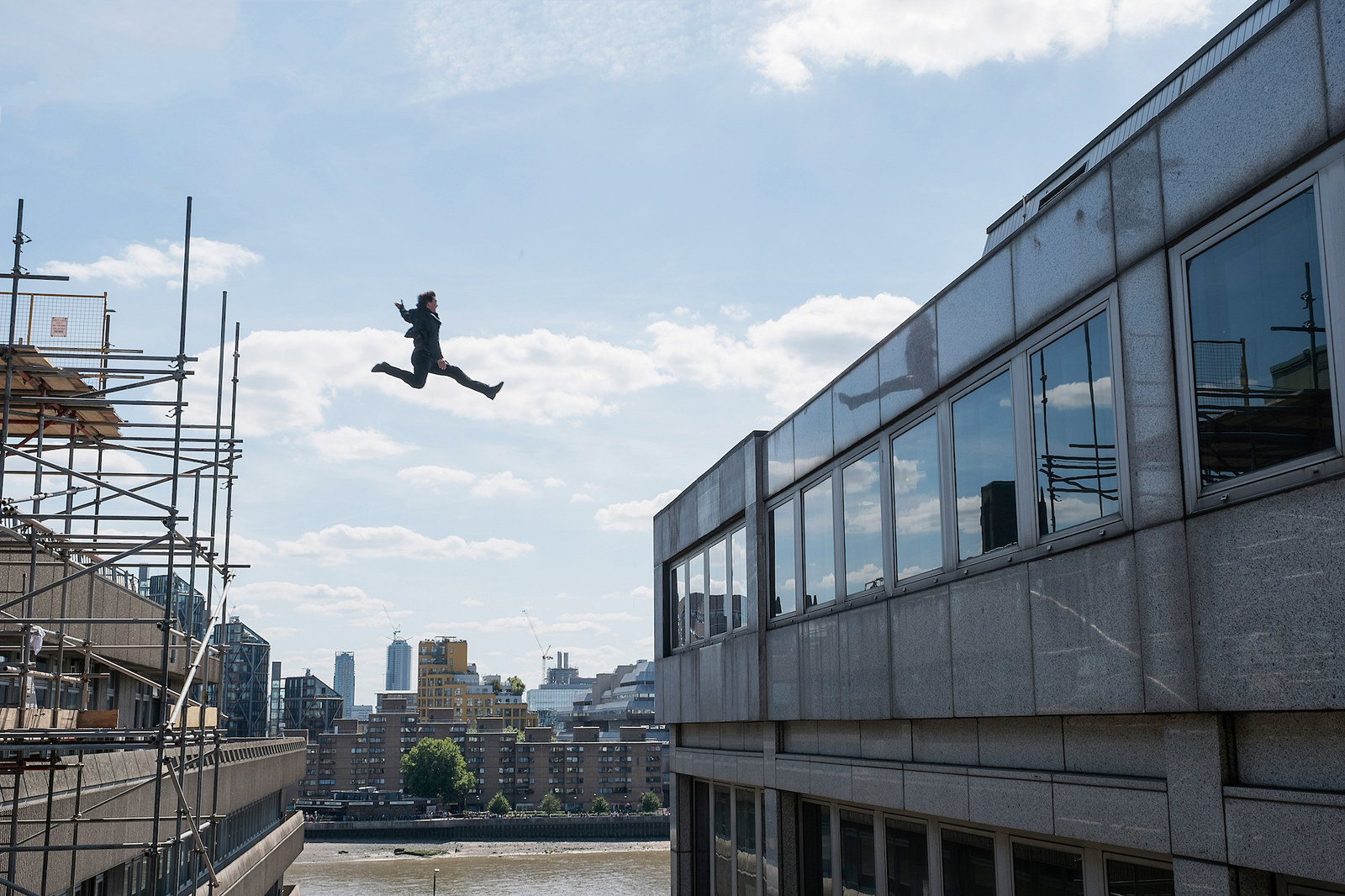
Ironically, Cruise did injure himself making Fallout, rather famously, while attempting a relatively simple leap between buildings in London. Even though he'd broken his ankle, Cruise completed the shot; he knew there wouldn't be a second take.
"I went to see him minutes after it happened, and [Tom] was already there with his foot up, and he had ice on it," McQuarrie said. "He said, 'Did we get the shot?' And I said, 'Yeah, of course we got it. It looked great.' And he goes, 'Good, because we're not coming back here.'"
It was the first day of shooting that particular sequence, so McQuarrie floated the notion of jettisoning it entirely and writing something different that wouldn't be quite so demanding of his star. Cruise, however, wouldn't hear of it.
"He said, 'No, we're coming back and we're going to finish this thing. I didn't break my ankle for nothing,'" McQuarrie recalled.
Cruise is willing to let his heroes look unheroic.
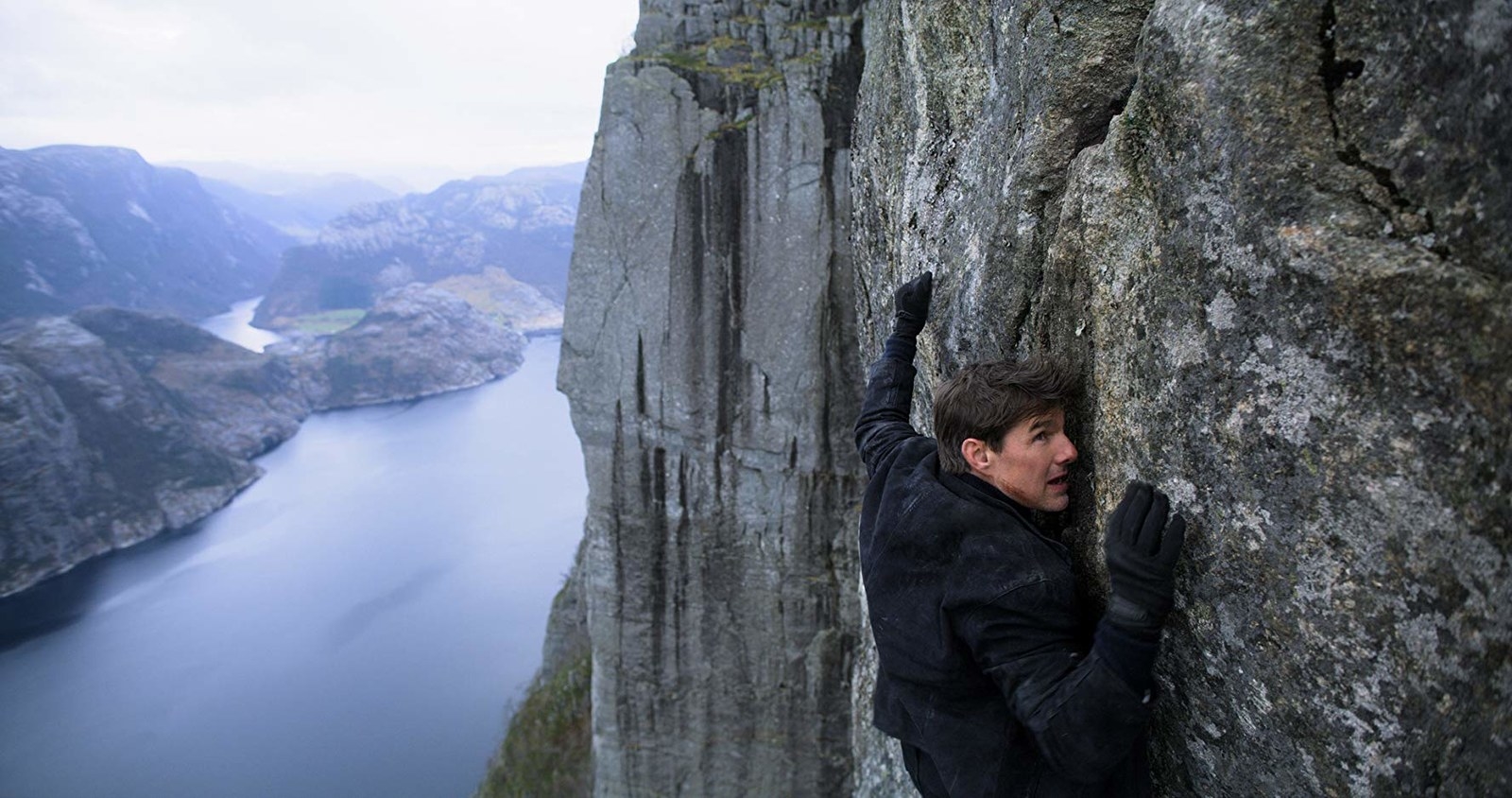
Cruise's injury — and two-month recovery period — did provide McQuarrie with the opportunity to fix a dire issue with his film's second act. Namely, he didn't quite know how to end it.
"We were working towards another scene that was struggling to find its place in the movie, and I would have been shooting that scene days later," he said. "Suddenly, I wasn't. … We knew that the foot chase was part of the movie, and what we didn't know is most of what happened in London."
So McQuarrie edited together what he'd already shot, jettisoned the old scene, and refashioned his script to include a sequence involving the head of Hunt’s agency (played by Alec Baldwin) confronting Hunt and his team. He declined to reveal what the original scene entailed because he may want to use it in a different film. But he hinted that it painted Cruise's heroic Hunt in a much grayer light — and Cruise was more than fine with it. He even pitched a “much darker” idea back to McQuarrie for the scene.
"When did he, I realized, Wow, Tom is more open to me messing with this character than I was really aware of,” McQuarrie said. “I sincerely hope that this scene or something like it finds its way back into the [franchise]. When it does, I will tell you."
It's really hard to top what you've done in a Mission: Impossible movie, even if it's doing another Mission: Impossible movie.
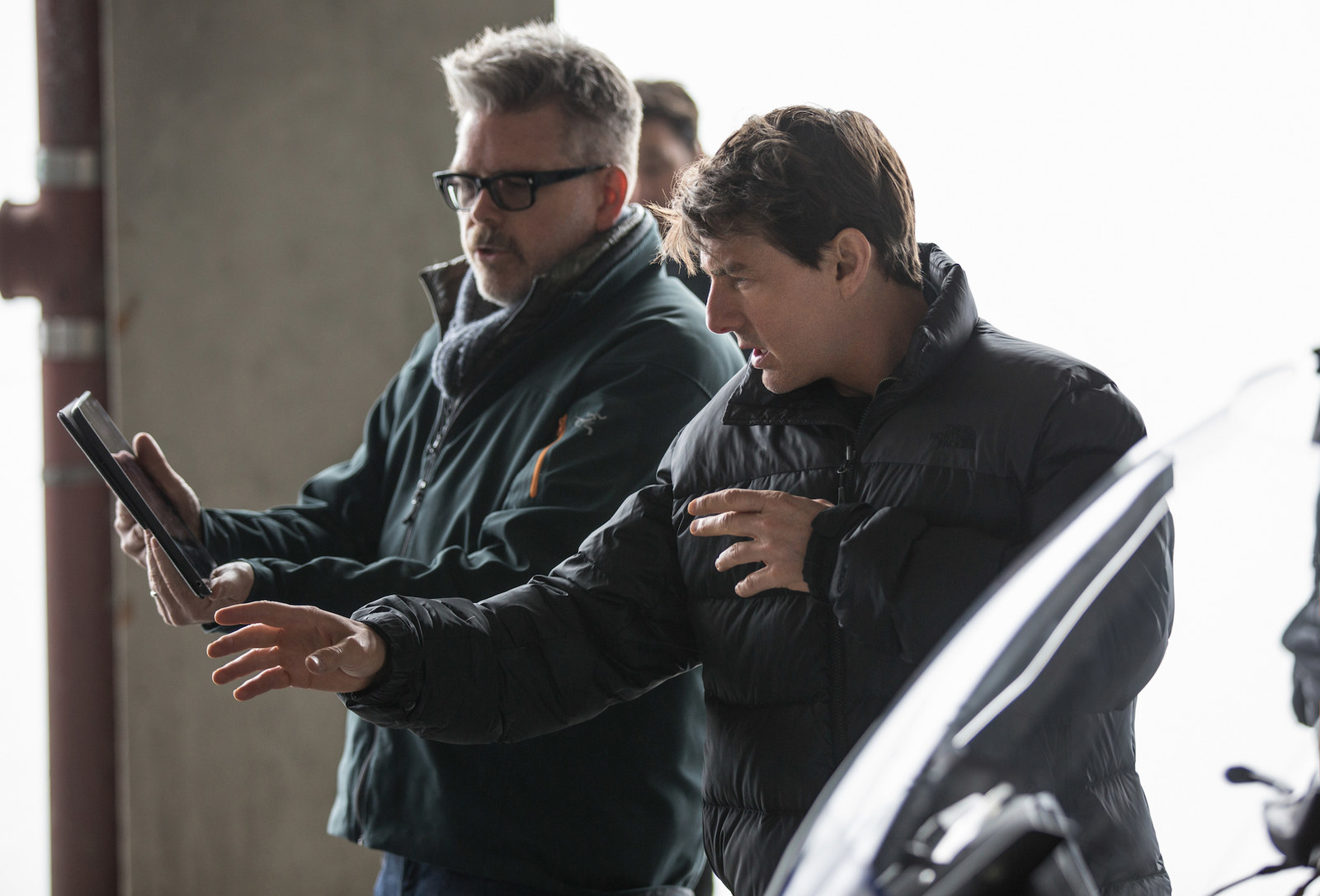
Despite his tease, McQuarrie demurs when asked if he'll direct another Mission: Impossible movie. "There has certainly been discussion" is about all he'll admit.
Part of McQuarrie's hesitation stems from a moment when he was shooting 2015's Rogue Nation, which included a gonzo stunt involving Cruise hanging from the side of a massive A400 airplane as it took off into the air. "I turned to [cinematographer] Robert Elswit and said, 'I feel really bad for the next guy, because I don't know what's left.' And, of course, the joke was on me, because I ended up being the next guy."
After making Fallout, McQuarrie once more felt unsure of what he could possibly do to top what he's done before. "A lot of smoke would have to clear before I could even entertain that idea."
That said, McQuarrie is certain that he’d like to work with Cruise again. “He's not there to make a Tom Cruise movie. He's there to make your film,” he said. “The same way that I will support whatever idea he presents to me whether I believe in it or not, he backs me the same way, with the understanding that when it doesn't work, I'm not going to fight reality. That's at the core of why we work together as well as we do. What I always say is we're involved in one long conversation about movies — that's occasionally interrupted by production.”
